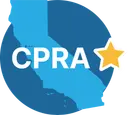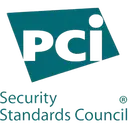Since 1972, the National Institute of Standards and Technology (NIST) has been at the forefront of creating cybersecurity guidelines that have profoundly impacted today’s security protocols. NIST’s continuous efforts in setting standards have been instrumental for organizations seeking to improve their information security strategies and safeguard their information systems.
NIST controls are essential guidelines developed to help organizations secure their information systems. These controls provide a structured approach to managing cybersecurity risks and ensuring compliance with federal standards.
Key takeaways
- NIST controls provide essential guidelines for securing both federal and non-federal information systems, helping businesses manage risks, including supply chain risk management and communications protection.
- The NIST SP 800-53 catalog contains 20 security and privacy controls families, covering areas like access control, incident response, and system and communications protection.
- Thoropass simplifies the implementation of NIST by offering automated compliance tracking, centralized control management, and real-time monitoring for continuous improvement.
What are NIST controls?
NIST controls refer to the security controls defined within NIST frameworks, particularly NIST SP 800-53. These controls are standards for federal information systems, and they aim to ensure information security and protect against unauthorized access.
These controls also serve as a foundation for organizations looking to secure sensitive data, such as personally identifiable information (PII) and federal information systems. Medium and large organizations are increasingly adopting NIST-based frameworks because of their rigorous approach to risk assessment and program management.
NIST Cyber Security Framework (CSF) and controls
The NIST SP 800-53 serves as a fundamental component within the NIST cybersecurity framework, offering an organized method for applying security controls.
The concepts of Govern (GV), Identify (ID), Protect (PR), Detect (DE), Respond (RS), and Recover (RC) align closely with NIST SP 800-53 control families and impact levels as they represent core functions of a cybersecurity framework. They relate to the implementation of controls by guiding how organizations should prioritize, implement, and manage security measures across different levels of sensitivity.
- Govern (GV): Focuses on establishing, communicating, and monitoring an organization’s cybersecurity risk management strategy, ensuring that cybersecurity is integrated into broader enterprise risk management and governance activities, and helping organizations make informed decisions.
- Identify (ID): Involves understanding and assessing cybersecurity risks by identifying critical assets, systems, data, and threats, which helps prioritize security efforts in alignment with business goals.
- Protect (PR): Implements safeguards to ensure the security of assets and services, minimizing the likelihood and impact of cybersecurity incidents through access control, data security, and training measures.
- Detect (DE): Focuses on monitoring and identifying cybersecurity incidents by finding and analyzing anomalies, threats, and other potential security events in a timely manner.
- Respond (RS): Encompasses actions taken to mitigate the effects of detected cybersecurity incidents, including containment, communication, and remediation steps.
- Recover (RC): Aims at restoring services and operations affected by cybersecurity incidents, ensuring business continuity, and learning from the event to improve resilience.
Understanding NIST SP 800-53 fundamentals
NIST SP 800-53, titled “Security and Privacy Controls for Federal Information Systems and Organizations,” is a key publication from the National Institute of Standards and Technology (NIST). It provides a comprehensive set of security and privacy controls for federal information systems aimed at improving information security, risk management, and privacy protection.
These guidelines are used not only by federal agencies but also by many private sector organizations to strengthen their cybersecurity posture.
NIST SP 800-53 was developed to provide a robust framework for managing security risks associated with information systems. Its main objectives are to:
- Protect information systems: Safeguard the integrity, confidentiality, and availability of federal information systems.
- Manage risks: Enable organizations to identify and mitigate potential threats, vulnerabilities, and impacts associated with information processing.
- Maintain privacy: Address the privacy concerns related to information systems and ensure compliance with applicable privacy regulations.
Private sector NIST implementation
Although designed for federal agencies, NIST SP 800-53 is widely adopted by various industries for its comprehensive and flexible approach to security and privacy. Sectors like financial services, healthcare, and critical infrastructure often leverage the framework to comply with other regulatory requirements (e.g., HIPAA, PCI-DSS) or as part of their overall risk management strategies.
Control classification and impact levels
The framework categorizes controls into three classes based on their primary function:
- Technical controls: Safeguards implemented directly within the information system (e.g., access control mechanisms).
- Operational controls: Procedures and activities performed by people (e.g., incident response or disaster recovery).
- Management controls: Security policies and practices established at the organizational level (e.g., risk assessment or security planning).
Each control is also classified according to its impact level (low, moderate, or high) based on the potential consequences of a security breach.
NIST SP 800-53 Revision 5 enhancements
NIST SP 800-53 has undergone several revisions to stay current with evolving technology and security practices. Revision 5, released in 2020, introduced significant updates:
- Integration of privacy controls: Enhanced focus on privacy risks alongside traditional cybersecurity concerns.
- Unified controls: Merging security and privacy controls into a unified set for better integration and management.
- Inclusion of supply chain risk management: A new control family addressing risks posed by suppliers and third-party service providers.
- Focus on cyber resilience: Increased emphasis on proactive measures to ensure that systems can recover from attacks.
- Tailoring and flexibility: More guidance on customizing controls to fit diverse organizational needs.
How are NIST SP 800-53 controls organized?
The controls are organized into 20 control families. These families represent key aspects of security and privacy management:
Access Control (AC)
Class: Technical
Controls focused on regulating system access to ensure that only authorized users and devices have access to resources.
Audit and Accountability (AU)
Class: Technical
Controls that ensure the recording of actions, the generation of audit logs, and the responsibility of users for their actions.
Identification and Authentication (IA)
Class: Technical
Controls ensuring that the system can verify the identity of users, devices, or other systems before granting access.
System and Communications Protection (SC)
Class: Technical
Controls that protect the confidentiality, integrity, and availability of information transmitted or received by the system.
System and Information Integrity (SI)
Class: Technical
Controls that ensure systems operate correctly and safeguard them from data corruption and attacks.
Awareness and Training (AT)
Class: Operational
Controls that focus on security training and awareness for system users and personnel.
Configuration Management (CM)
Class: Operational
Controls for managing system configurations, preventing unauthorized changes, and ensuring secure configurations.
Contingency Planning (CP)
Class: Operational
Controls ensuring that plans and procedures are in place to handle system disruptions and maintain system availability.
Incident Response (IR)
Class: Operational
Controls for preparing, detecting, and responding to security incidents, as well as recovering from such incidents.
Maintenance (MA)
Class: Operational
Controls that ensure systems are regularly maintained, and repairs are carried out securely.
Media Protection (MP)
Class: Operational
Controls that focus on protecting physical and digital media that contain sensitive information, ensuring secure storage and disposal.
Physical and Environmental Protection (PE)
Class: Operational
Controls ensuring that physical access to facilities and systems is protected, along with safeguarding against environmental hazards.
Personnel Security (PS)
Class: Operational
Controls that ensure personnel handling sensitive information are trustworthy and qualified, including background checks and role-based access.
Risk Assessment (RA)
Class: Management
Controls for assessing risks related to the information system and determining how to mitigate them effectively.
Security Assessment and Authorization (CA)
Class: Management
Controls for assessing the effectiveness of security controls and authorizing systems to operate based on risk assessments.
Planning (PL)
Class: Management
Controls ensuring that security and privacy considerations are integrated into system planning processes.
System and Services Acquisition (SA)
Class: Management
Controls ensuring that security is considered when acquiring systems and services, including secure development and supply chain risk management.
Program Management (PM)
Class: Management
Organizational controls for overall security program management, ensuring the entire security and privacy posture is aligned with policies and objectives.
Supply Chain Risk Management (SR)
Class: Operational
Controls that focus on managing risks posed by suppliers, third parties, and service providers, especially in procurement and system components.
Audit Management (AU)
Class: Management
Ensures an organization reviews its practices and controls to identify weaknesses and compliance with policies, laws, and standards.
Privacy Controls (Appendix J)
Class: Cross-Class
Designed to address privacy risks, some privacy controls may cut across technical, operational, and management categories.
“Some nuances around NIST controls are that they may be more geared towards government agencies or organizations working with government entities as opposed to companies working in the private sector. NIST controls may be more specific in some areas, but they can also be up for interpretation depending on an environment’s scope. Companies may not have experts in NIST standards on staff to help understand some of the nuances within the controls.” – Jay Trinckes, Data Protection Officer, Thoropass
What are the NIST security control baseline levels?
NIST SP 800-53 provides control baselines for different levels of impact on security (low, moderate, high). These baselines are predefined sets of controls tailored to meet the security needs of information systems based on their level of sensitivity:
- Low-impact systems: Require fewer controls, focusing on core security measures.
- Moderate-impact systems: Require a larger number of controls, including more robust monitoring and incident response mechanisms.
- High-impact systems: Require comprehensive controls due to the potentially severe consequences of a security breach (e.g., systems handling classified or highly sensitive information).
Organizations can customize these baselines by applying tailoring techniques (e.g., selecting, modifying, or supplementing controls).
How do you implement NIST controls enterprise-wide?
A structured approach incorporating risk assessment, configuration management, and planning for incident response is essential when effectively implementing NIST controls. By embedding these controls within wider compliance programs, organizations can greatly improve their management of cybersecurity risks and diminish potential threats.
Here’s a step-by-step guide:
- Risk assessment: Evaluate the potential risks to your business, including foreign intelligence entities, personnel security, and supply chain risk management.
- Align controls with business objectives: Determine how each control can support your organizational goals and mitigate risks.
- Set up monitoring systems: Implement automated tools to monitor and report on the effectiveness of controls, such as through configuration management.
- Review and update regularly: Cybersecurity threats evolve, so it’s essential to revisit and update your controls frequently.
Organizations may face challenges when implementing these controls, such as aligning them with existing infrastructure or managing costs. However, with the right strategy and tools, these challenges can be addressed efficiently.
How does Thoropass streamline NIST control management?
Implementing NIST controls can be complex, but Thoropass helps organizations simplify this process by providing automated solutions for compliance management. Here’s how Thoropass can benefit your business:
- Automated compliance tracking: Thoropass keeps your organization up to date on the status of its security and privacy efforts.
- Centralized control management: With Thoropass, you can manage all control families, from access control to environmental protection, through a single dashboard.
- Real-time monitoring and reporting: Thoropass offers continuous monitoring to ensure your controls remain effective and compliant.
- Customizable controls: Tailor your security approach to meet the needs of specific industries, ensuring you stay aligned with NIST SP 800-53.
By using Thoropass, organizations can reduce the complexity of compliance and streamline their implementation of NIST controls.
NIST controls provide a comprehensive and scalable framework for securing your business. By implementing these guidelines, you can reduce risk, ensure compliance, and protect your most valuable assets.
Ready to simplify compliance? Request a demo to learn how Thoropass can help your business seamlessly with your security posture.
More FAQs
What are NIST controls, and why are they important?
NIST controls are essential guidelines that help organizations manage risk effectively and bolster their security posture against cybersecurity threats. By implementing these controls, organizations can safeguard the integrity, confidentiality, and availability of their information systems.
What are the key components of NIST SP 800-53?
The control baselines, families of controls, and implementation guidance for security measures are all integral components of NIST SP 800-53. Revision 5 emphasizes adaptability and an enhancement in privacy controls. These elements play a critical role in forming a robust framework for cybersecurity.
How can organizations effectively implement NIST controls?
Organizations can effectively implement NIST controls by adopting a structured approach that includes risk assessment, configuration management, and incident response planning, while also utilizing automation tools and continuous monitoring to improve compliance. This ensures a comprehensive strategy for managing security controls.
What are the benefits of adopting NIST controls?
Adopting NIST controls significantly enhances an organization’s security posture and improves risk mitigation while ensuring regulatory compliance. This framework effectively aids in managing and reducing cybersecurity risks.
What challenges do organizations face when implementing NIST controls?
Organizations face challenges such as resource constraints, the complexity of implementation, and the need to stay updated with revisions when implementing NIST controls. To address these issues, prioritizing key areas and utilizing automation tools are essential strategies.

Related Posts
Stay connected
Subscribe to receive new blog articles and updates from Thoropass in your inbox.
Want to join our team?
Help Thoropass ensure that compliance never gets in the way of innovation.













.png)